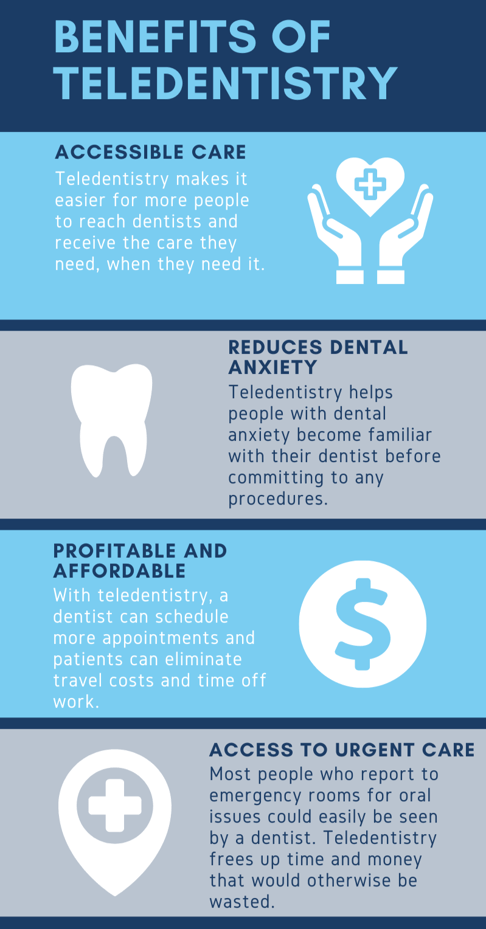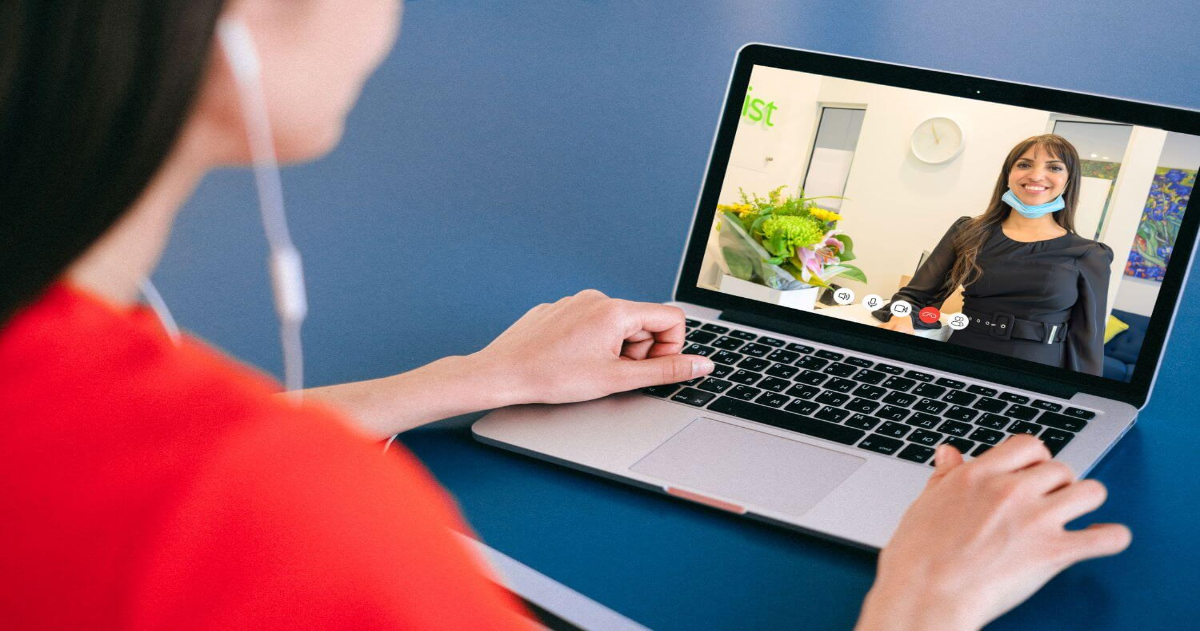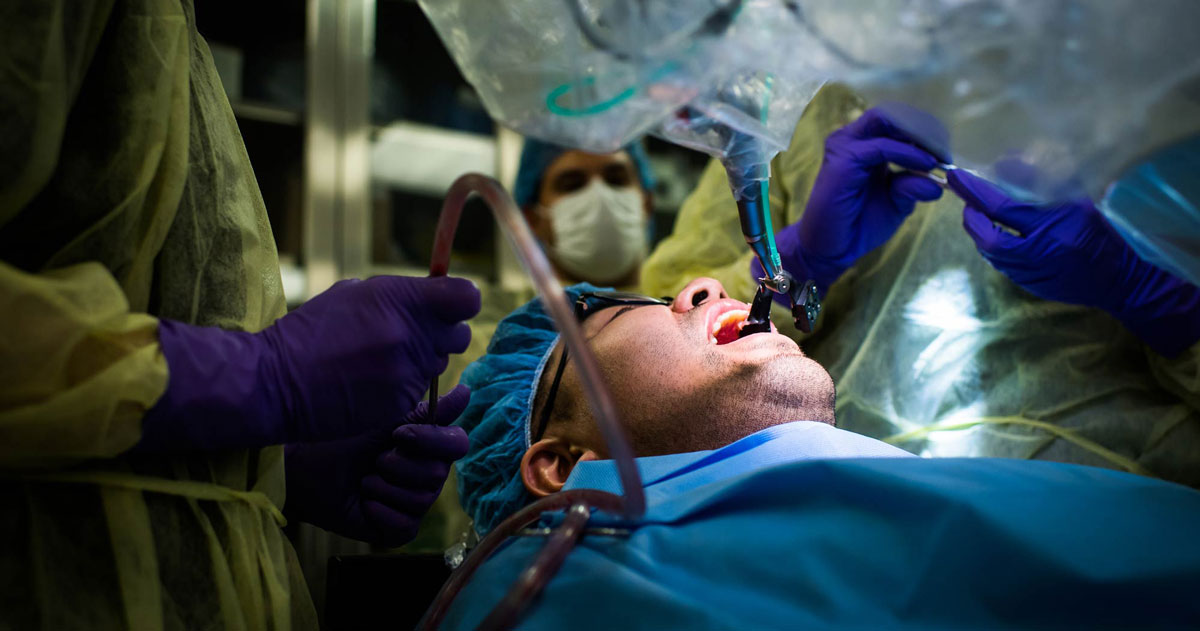COVID-19 has had an almost unparalleled impact on how we live our daily lives. Seemingly overnight we were thrust into a world of social distancing, face masks and unbearable Zoom calls that always drag on 20 minutes longer than needed.
But that’s not to say some good didn’t come out of the pandemic. The world realised that working from home can be just as productive as marching into an office every morning, air quality around the world increased thanks to lockdowns, and industries were forced to innovate in order to survive.
Dentistry has long been a field that’s embraced technology and used it to improve patient care. Due to the intimate nature of dental check ups, it was clear that there needed to be a new model for consultations that was safe and reliable for both the patient and the dentist.
That’s where teledentistry comes in.
What is teledentistry?
When the world shut down, the health industry had to figure out a way to provide care to patients while still abiding by strict COVID-19 regulations. In health care, the solution for this was to continue doing consultations via video conferencing methods.
After all, if businesses could leverage video conferencing to continue operating on a near normal basis, it made sense for the healthcare industry to adopt similar methods.
Simply put, teledentistry is a broad term that encapsulates a range of dental health services that are delivered virtually, whether that be through video conference calls or simply over the phone.
Interestingly, the term teledentistry was first coined way back in the 1970’s when NASA utilised telehealth to ensure their astronauts would remain healthy during space missions. The US Armed Forces later adopted teledentistry as a way for their dentists to consult with specialists back home via telephone and fax so that they could provide optimal care to their soldiers.
How does it work?
There are two main ways in which dentistry can be conducted in a virtual environment:
Dentist to patient consultation: Instead of having the patient visit a dental practice and sit around in the waiting room, it’s possible to carry out dental consultations online. Thanks to high speed internet and the plethora of video conferencing apps available, dentists can offer advice, prescribe emergency pain relief or treatment plan with their patients. Due to the accessibility and timeliness of teledentistry, there’s an opportunity to offer services that don’t necessarily require a full appointment such as after-surgery care or dental recommendations regarding toothbrushes or flossing.
Store and forward: This method involves collecting patient data (whether that be images, x-rays, records etc), storing it in a secure cloud-based platform and then forwarding it to the relevant specialist. It’s possible that a dental hygienist could also collect the data and then forward it to a dentist, meaning that treatment can be provided in a much more cost-effective and time efficient way.
Benefits of teledentistry
Teledentistry was a massive help in ensuring people could still receive healthcare during the pandemic and there’s reason to believe that teledentistry could have many uses moving forward.
The opportunities to assist rural and regional patients with their oral health are really encouraging. In most rural areas, it’s not financially viable to have a dentist in each town or village. However, it’s possible to conduct virtual dentist appointments for check ups, or provide rural patients with access to highly-trained specialists that they’d otherwise have to travel to major cities to visit.
Perhaps the biggest benefit of teledentistry is that it increases accessibility to dental care for everyone. At a recent telehealth conference, President and CEO of The Teledentists Dr Maria Kunstadter spoke about how teledentistry can target a segment of the population who might otherwise avoid trips to the chair.
“Currently there is a huge gap in our system for dental help,” she explained. “Last year, 39% of the population did not see a dentist. For most people, it takes an average of 3 years for them to go into a dental appointment. That’s about 125 million people today who need dental help.”
Dental anxiety is reported to affect over 36% of the population. In addition to this startling statistic, the American Dental Association believes that over $1.7 billion is spent annually on treating people who visit the emergency room with an issue that could very easily be treated by a dentist. This money would clearly be much better spent on other health services or training, but it’s being taken up because people are either fearful of being treated in a dental setting or are worried about how much treatment might cost.
The other main reasons that people put off seeing a dentist is that they simply lack the time required to attend an appointment or they have difficulty travelling to the dentist.
Teledentistry not only solves these issues but offers a much more accessible and easy way to diagnose and treat dental issues. While the pandemic might have brought about the need for different options for consultations, it’s evident that teledentistry has many benefits that can be used in the future as well.

Limitations of teledentistry
As with any emerging innovation, teledentistry isn’t without it’s growing pains. Obviously, you can’t complete complex surgeries over a Zoom call and there’s only so much detail a phone camera can provide.
It can also be a struggle to manage the expectations from patients when conducting teledentistry. Dentists need a fair amount of detail in order to accurately prescribe treatment, which is not always possible over the phone.
That’s not to say that teledentistry can’t be massively helpful to the field of dentistry going forward, it just means that there needs to be consideration about when it’s used, who for and what it needs to accomplish.
At RipeGlobal, we pride ourselves on providing you with the latest in emerging dental trends and technologies so that you can provide an optimal level of care to your patients. If you want to be at the forefront of the latest in dentistry, then consider looking into one of our memberships, where you’ll have access to a wide range of educational content that will help you become the best dentist you can be.






